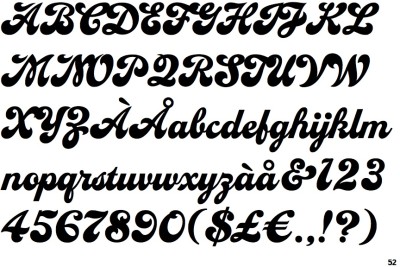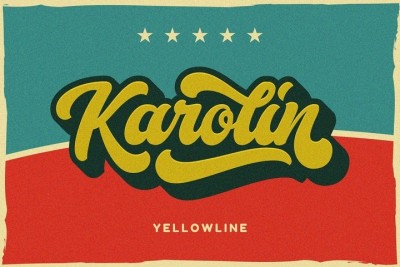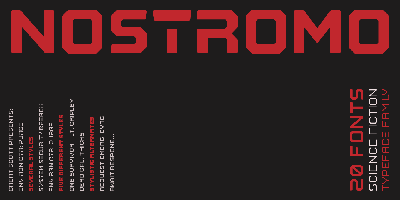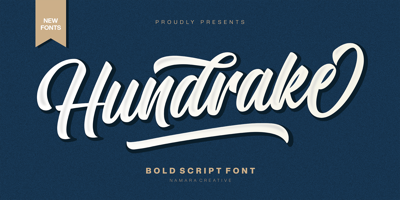Corporate Typography: Free Fonts That Mean Business
Corporate typography must navigate the delicate balance between professional authority and budget consciousness, requiring fonts that command respect while remaining cost-effective for enterprise-scale implementation. Modern free font collections have evolved to provide sophisticated options that rival expensive corporate licensing while offering the reliability, versatility, and professional polish that serious business communications demand. Understanding how to identify and implement business-appropriate free font solutions enables organizations to maintain corporate credibility while optimizing design budgets and operational efficiency.
Defining Corporate Typography Standards
Corporate typography extends far beyond aesthetic preferences to encompass legal compliance, brand consistency, international compatibility, and stakeholder confidence that directly impact business relationships and organizational reputation.
Professional Authority Requirements: Corporate fonts must establish immediate credibility with diverse stakeholders including investors, clients, partners, and employees. Typography choices influence perception of organizational competence, stability, and trustworthiness that affect business relationships and deal negotiations.
Multi-Platform Consistency Needs: Enterprise communications span numerous platforms from formal presentations and legal documents to websites and mobile applications. Corporate typography must maintain consistent professional appearance across all touchpoints while adapting to different technical requirements and usage contexts.
Scalability and Flexibility: Corporate fonts require extensive weight ranges and style variations that support complex organizational hierarchies, diverse communication needs, and future growth without requiring complete rebranding or additional licensing expenses.
International Compatibility: Global corporations need typography that works effectively across different languages, writing systems, and cultural contexts while maintaining brand recognition and professional standards in all markets.
Legal and Compliance Considerations: Corporate typography must meet accessibility standards, contractual requirements, and industry regulations while supporting clear communication of legal, financial, and regulatory information without ambiguity or misinterpretation.
Enterprise-Grade Free Font Selections
Identifying free font options that meet corporate standards requires understanding which typefaces provide the reliability, professionalism, and comprehensive features necessary for serious business applications.
Source Sans Pro: Adobe's Corporate Contribution Source Sans Pro represents Adobe's commitment to open-source typography, providing corporate-quality fonts with comprehensive weight ranges and international character support that rivals expensive enterprise licenses.
This free font family includes six weights from ExtraLight to Black, each with italic variations, providing the flexibility needed for complex corporate communication hierarchies. The font's humanist characteristics balance authority with approachability, making it suitable for both formal documents and customer-facing communications.
Technical Excellence: Source Sans Pro features exceptional hinting, comprehensive Unicode support, and optimization for both print and digital applications. The font performs consistently across different operating systems and browsers while maintaining professional appearance at all sizes.
Corporate Applications: Perfect for annual reports, corporate presentations, website content, and internal communications where professional credibility must be maintained without sacrificing readability or visual appeal.
IBM Plex: Corporate Design System Typography IBM Plex demonstrates how major corporations approach systematic typography design, providing comprehensive font families that support complete brand ecosystems with consistent visual language across all applications.
The Plex family includes Sans, Serif, and Mono variations that work together harmoniously while serving different functional requirements. This systematic approach provides corporate flexibility while maintaining visual coherence throughout organizational communications.
Distinctive Corporate Character: IBM Plex offers distinctive personality that prevents generic appearance while maintaining professional appropriateness for conservative corporate environments. The fonts communicate innovation and forward-thinking without sacrificing traditional business credibility.
Implementation Benefits: Available as free font downloads with open-source licensing, IBM Plex provides enterprise-quality typography without licensing restrictions or ongoing fees that complicate budget management.
Roboto: Google's Enterprise Solution Roboto combines geometric precision with humanist warmth, creating corporate typography that communicates technological competence while remaining accessible and professional across diverse business applications.
Developed for Android's global user interface, Roboto underwent extensive testing and refinement that ensures reliable performance across different devices, screen sizes, and technical environments that corporate communications encounter.
Corporate Versatility: The Roboto family includes 12 weights and styles that provide comprehensive options for corporate hierarchies, from light body text to bold headlines, while maintaining consistent personality throughout organizational communications.
Digital Optimization: Roboto excels in digital corporate applications including websites, mobile apps, and electronic documents where screen optimization directly impacts user experience and professional perception.
Industry-Specific Corporate Font Strategies
Different corporate sectors require typography approaches that align with industry conventions, regulatory requirements, and stakeholder expectations while maintaining professional standards and cost effectiveness.
Financial Services Typography Financial institutions require fonts that communicate security, stability, and trustworthiness while meeting regulatory disclosure requirements and accessibility standards that protect both institutions and customers.
Merriweather provides serif authority with contemporary optimization that works excellently for financial communications requiring traditional credibility with modern accessibility. This free font offers excellent readability for complex financial disclosures while maintaining professional gravitas.
Legal Compliance: Financial typography must support clear disclosure of terms, conditions, and regulatory information without creating ambiguity that could lead to compliance violations or customer confusion.
Technology Sector Requirements Technology corporations need fonts that communicate innovation and competence while maintaining professional credibility with enterprise customers and investors who expect both cutting-edge capabilities and business reliability.
Inter represents the latest evolution in corporate typography design, specifically optimized for user interfaces and digital applications where technology companies conduct most business communications.
This free font provides variable font technology that enables responsive typography while maintaining consistent brand presentation across different devices and platforms that technology businesses depend upon.
Healthcare Corporate Communications Healthcare organizations require typography that builds trust and communicates competence while remaining accessible to diverse patient populations and regulatory bodies that oversee healthcare communications.
Lato combines professional authority with approachable warmth that works excellently for healthcare corporate communications requiring both credibility and compassion in patient and stakeholder interactions.
Manufacturing and Industrial Manufacturing corporations need typography that communicates reliability, precision, and industrial competence while supporting technical documentation and international business communications.
Work Sans provides clean, systematic typography that suggests organizational efficiency and technical competence while maintaining excellent readability across complex industrial documentation and international communications.
Global Corporate Typography Considerations
International corporations face unique typography challenges that require fonts supporting multiple languages, cultural contexts, and regional business conventions while maintaining consistent brand identity.
Multi-Language Support Corporate fonts must provide comprehensive character sets that support all business languages without compromising professional appearance or brand consistency across different markets and communication contexts.
Noto Sans (Google's "No Tofu" project) provides the most comprehensive multi-language support available in free font collections, covering hundreds of languages while maintaining consistent design quality across different writing systems.
Cultural Appropriateness Typography choices must respect cultural preferences and business conventions in different markets while maintaining global brand recognition and professional standards that support international business relationships.
Regional Adaptation Strategies Successful corporate typography systems adapt to regional preferences while maintaining core brand identity, ensuring professional acceptance across diverse cultural contexts without compromising organizational consistency.
Corporate Brand Identity Through Typography
Corporate typography serves as a fundamental element of brand identity that influences stakeholder perception, organizational culture, and business relationship development across all corporate touchpoints.
Brand Personality Communication Corporate fonts must communicate intended brand personality traits including reliability, innovation, expertise, and approachability while remaining appropriate for conservative business environments and formal communications.
Stakeholder Confidence Building Typography choices directly influence stakeholder confidence in organizational competence, stability, and professional standards that affect investment decisions, partnership development, and customer relationships.
Employee Brand Alignment Internal corporate communications require typography that reinforces organizational culture and values while supporting employee engagement and brand alignment across all levels of corporate hierarchy.
Customer Trust Development Customer-facing corporate communications need typography that builds trust and confidence while clearly communicating value propositions, terms, and organizational capabilities that support business development.
Implementation Strategies for Corporate Scale
Implementing free font solutions across enterprise organizations requires systematic approaches that ensure consistency, compliance, and professional quality while managing technical complexity and organizational change.
Enterprise Font Management Corporate typography implementation requires systematic font management that ensures consistent availability across all organizational systems, platforms, and team members while maintaining version control and licensing compliance.
Brand Guidelines Development Comprehensive typography guidelines must specify font usage, sizing hierarchies, color applications, and implementation standards that enable consistent professional presentation across all corporate communications and platforms.
Team Training and Support Successful corporate typography requires training programs that help team members understand font selection principles, implementation best practices, and brand compliance requirements without requiring design expertise.
Quality Control Systems Corporate typography quality requires systematic review processes that ensure consistent implementation while identifying and correcting deviations that could undermine professional presentation or brand consistency.
Legal and Compliance Considerations
Corporate typography must navigate complex legal requirements including accessibility standards, contractual obligations, and industry regulations that affect font selection and implementation across organizational communications.
Accessibility Compliance Corporate fonts must meet WCAG accessibility standards that ensure communications remain accessible to users with disabilities while maintaining professional quality and legal compliance across all applications.
Contractual Requirements Some corporate contracts specify typography requirements or restrictions that influence font selection, making license verification and compliance documentation essential for legal protection and relationship management.
Industry Regulations Regulated industries may have specific typography requirements for disclosures, warnings, or mandated communications that influence corporate font selection and implementation strategies.
International Legal Variations Global corporations must consider varying legal requirements across different jurisdictions while maintaining consistent brand presentation and professional standards in all markets.
Technology Integration and Performance
Corporate typography must integrate seamlessly with existing technology infrastructure while providing optimal performance across diverse platforms and applications that support business operations.
System Compatibility Corporate fonts must work consistently across different operating systems, software applications, and technology platforms without compromising professional appearance or functional performance.
Web Performance Optimization Digital corporate communications require typography that loads quickly and performs reliably across different browsers, devices, and network conditions that affect user experience and professional perception.
Document Compatibility Corporate fonts must maintain consistent appearance across document formats, sharing platforms, and collaboration tools that support business communications and workflow management.
Future Technology Planning Corporate typography strategies must anticipate technology changes and platform evolution while ensuring font choices remain viable and professional as systems and requirements evolve.
Measuring Corporate Typography Success
Corporate typography effectiveness should be measured through business impact, stakeholder response, and organizational efficiency rather than purely aesthetic or preference-based criteria.
Brand Recognition Metrics Track brand recognition and recall improvements following corporate typography implementation to understand impact on brand awareness and stakeholder relationships.
Professional Perception Studies Monitor stakeholder perception of organizational professionalism, competence, and trustworthiness to validate typography choices and identify improvement opportunities.
Operational Efficiency Analysis Measure efficiency improvements in document creation, brand compliance, and communication effectiveness following systematic typography implementation.
Cost-Benefit Evaluation Calculate savings from free font implementation compared to premium licensing while ensuring professional quality and business impact remain optimal for organizational objectives.
Future-Proofing Corporate Typography
Corporate typography strategies must anticipate future technology changes, market evolution, and organizational growth while maintaining cost-effectiveness and professional standards throughout business development.
Technology Trend Integration Stay informed about typography technology advances including variable fonts, AI-driven customization, and responsive typography that may enhance corporate communications and competitive positioning.
Scalability Planning Choose free font solutions that can scale with organizational growth, international expansion, and evolving communication needs without requiring complete typography overhauls or significant additional investment.
Brand Evolution Support Select typography systems that can adapt to brand evolution and market changes while maintaining recognition and professional standards throughout organizational development.
Conclusion: Corporate Excellence Through Strategic Typography
Corporate typography excellence results from strategic thinking about business objectives, stakeholder needs, and organizational requirements rather than expensive font licensing or premium design resources. The most successful corporations understand that professional typography serves business goals through clear communication, stakeholder confidence, and brand consistency.
Modern free font collections provide corporate-quality options that rival expensive enterprise licensing while offering the flexibility, reliability, and professional polish necessary for serious business communications across global markets and diverse stakeholders.
Start evaluating your corporate typography through the lens of business effectiveness rather than tool expense or licensing exclusivity. Professional corporate communications depend on strategic font selection, systematic implementation, and consistent application rather than premium resource access.
The future of corporate typography lies in understanding how fonts support business objectives while maintaining cost-effectiveness and operational efficiency. Free font solutions enable corporate excellence without compromising professional standards or budget sustainability.
Focus on creating typography systems that serve your organization's specific needs, stakeholder expectations, and business objectives. Corporate typography success comes from strategic resource utilization and professional implementation rather than expensive licensing or exclusive access to premium alternatives.




